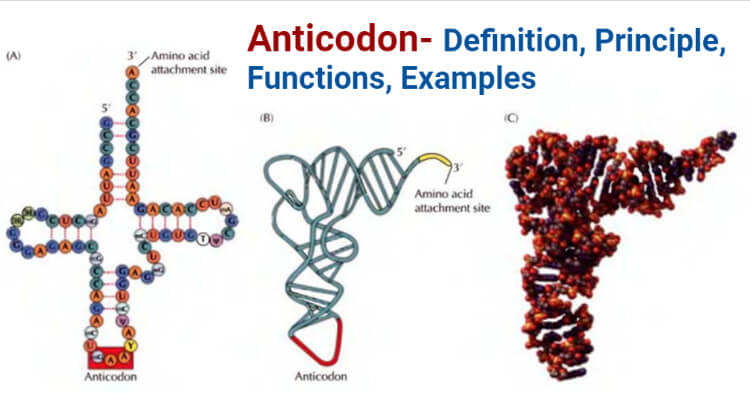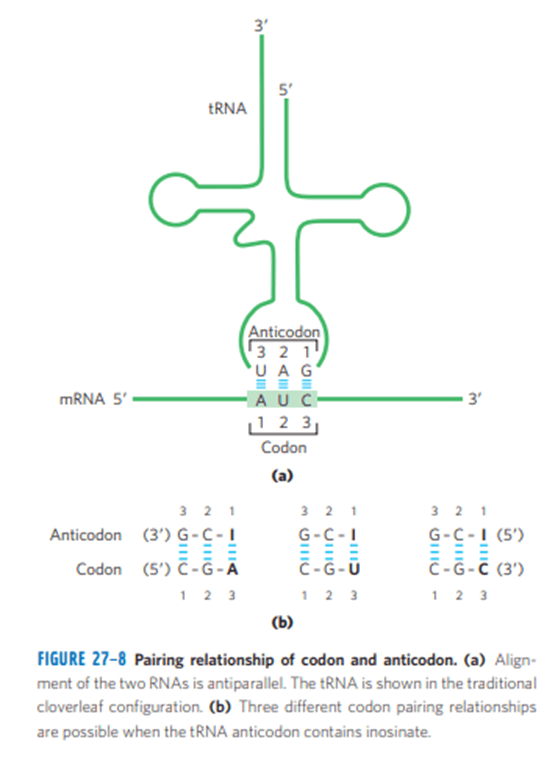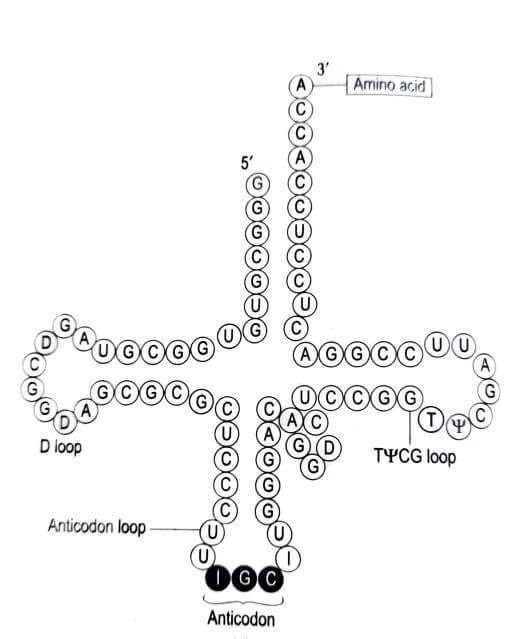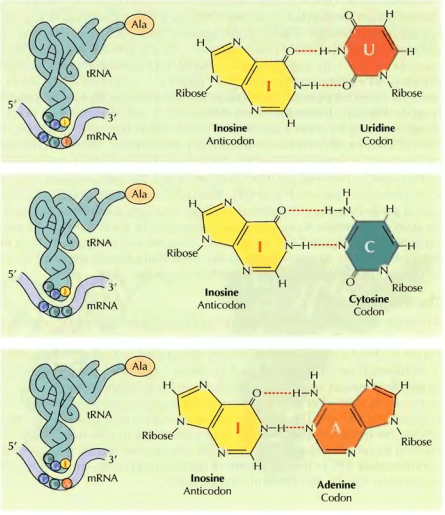Interesting Science Videos
What is Anticodon?
Anticodon is a trinucleotide sequence present on one arm of the tRNA (transfer RNA) which is complementary to the sequence or codon present on mRNA (messenger RNA).

- The anticodon sequence is present on the anticodon loop of the tRNA and is involved in the process of translation.
- The amino acid binds to the 3` adenosine end of the tRNA which yields an aminoacyl tRNA.
Anticodon Principle
- The arrangement of mRNA and tRNA is antiparallel.
- The first base of the codon on mRNA (5` to 3`) binds with the third base of anticodon on the tRNA to initiate the process of translation.

- Each tRNA carries a specific amino acid and it binds to the mRNA complementary codon on 30s subunit in prokaryotes and 40s subunit in eukaryotes.
- During this process the first anticodon is accepted by the A site, then it binds to the P site on mRNA where the growing polypeptide of the protein is held together.
- Once the amino acid carried by the tRNA is transferred the anticodon moves 3 nucleotides further to the E site (Exit).
- If it is considered that perfect paring occurs between codon and anticodon, then unique tRNA will be required for every amino acid.
- However, this is not the case. Some tRNAs include a nucleotide Inosinate (I) which contains an uncommon base known as ‘hypoxanthine’.

- This inosinate can form hydrogen bonds with three different nucleotides – U, C and, A.
- Inosinate binds to these nucleotides with weaker hydrogen bonds leading to weaker pairings as compared to the normal pairings between the nucleotides.
- As some tRNAs include this different nucleotide approximately 32 tRNAs can code for 61 amino acids.
- This imperfect pairing of inosinate with other nucleotides is known as the Wobble hypothesis in which there is perfect pairing between two nucleotides but imperfect or weak pairing between the third nucleotides.

Anticodon Functions
- An anticodon is responsible for the process of translation in which a protein polypeptide is formed.
- An anticodon determines the amino acid specificity.
- Anticodon is responsible for the initiation and termination of the translation process.
- The first anticodon in prokaryotes and eukaryotes is UAC which binds to the sequence AUG on the mRNA.
- The initiator anticodon of the tRNA binds with a complementary codon on mRNA which adds the first amino acid of the protein polypeptide. The first amino acid in prokaryotes is N-formyl-methionine, whereas the one in eukaryotes is unmodified methionine.
- As the tRNA anticodon is responsible for the initiation of the translation process, it is also responsible for the termination of translation.
- When the anticodon on tRNA is – AUU, AUC, and ACU, one of these three sequences termination is achieved.
Anticodon Examples
Based on the genetic code with codons that code for amino acids the possible anticodons are as follows:
- The anticodons for amino acid Phenylalanine are – AAA, AAG
- The anticodons for amino acid Leucine are – AAU, AAC, GAA, GAG, GAU, GAC
- The anticodons for amino acid Isoleucine are – UAA, UAG, UAU
- The anticodon for amino acid Methionine is – UAC
- The anticodons for amino acid Valine are – CAA, CAG, CAU, CAC
- The anticodons for amino acid Serine are – AGA, AGG, AGU, AGC, UCA, UCG
- The anticodons for amino acid Proline are – GGA, GGG, GGU, GGC
- The anticodons for amino acid Threonine are – UGA, UGG, UGU, UGC
- The anticodons for amino acid Alanine are – CGA, CGG, CGU, CGC
- The anticodons for amino acid Tyrosine – AUA, AUG
- The anticodons for amino acid Histidine are – GUA, GUG
- The anticodons for amino acid Glutamine are – GUU, GUC
- The anticodons for amino acid Asparagine are – UUA, UUG
- The anticodons for amino acid Lysine are – UUU,UUC
- The anticodons for amino acid aspartic acid are – CUA, CUG
- The anticodons for amino acid Glutamine acid are – CUU, CUC
- The anticodons for amino acid Cysteine are- ACA, ACG
- The anticodons for amino acid Tryptophan are – AGU, ACC
- The anticodons for amino acid Arginine are – GCA, GCG, GCU, GCC, UCU, UCC
- The anticodons for amino acid Glycine are – CCA, CCG, CCU, CCC
References
- Cell_ A Molecular Approach, Fourth Edition, The – Geoffrey M. Cooper & Robert E. Hausman.
- Lehninger Principles of Biochemistry – 6th ed- c2013.
- Cell Biology, T Devasena, Oxford University Press.
